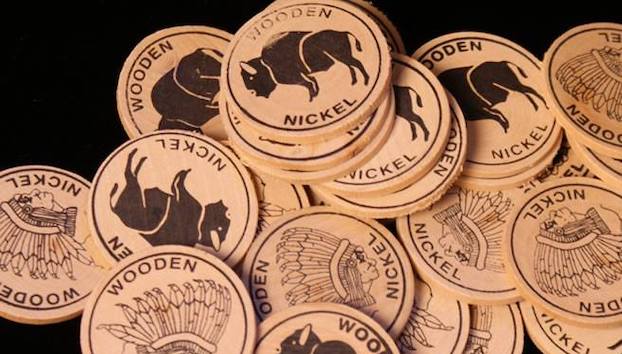About those wooden nickels; hopefully you haven’t taken any
Published 4:46 pm Monday, February 27, 2023
|
Getting your Trinity Audio player ready...
|
My search of local history takes me on some very interesting adventures. People share such fascinating accounts with me and ask me if I could do a newspaper story in my column about what they have told me. I would love to do a column about all the stories I hear, and maybe someday I’ll do a book about them. In the meantime, I have to carefully vet and research what I share here in the paper, what I share at the Underground Railroad Museum and what I share on my walking, history tours, as I want to share verified, accurate information.
I am reminded of the wisdom my dad, Issac Payton, would give my sisters and me. He would often tell us “to make sure something was true before we shared it” and he would admonish us “and don’t take no wooden nickels.” My father-in-law John Gracy would often tell me about being street-smart and wise when I went to live in New York City. “Lee” he would say, “people will tell you a lot of things but you got to be wise and don’t take no wooden nickels.”
My daughters Sonja and Terri Michelle grew up with the same advice from me. “Ask God for wisdom and don’t take no wooden nickels” I would tell them.
The term ‘wooden nickels’ made it into our language as a warning to mean be careful, be wise and don’t readily accept everything you hear as being genuine and or profitable.
The old saying “don’t take any wooden nickels”, is considered a lighthearted reminder to be cautious in one’s dealings. This adage precedes the use of wooden nickels as a replacement currency, suggesting that its origins lie not in the genuine monetary value of nickels, but rather in their purely commemorative nature alone. In other words, research the origin of something before you pass it on as being true or valuable.
A Washington history fan who just found some actual wooden nickels while renovating an old home here in Washington wanted to know more about them, so he wrote to me. I told him the wooden nickels he had were actually novelty coins used from 1930 and were made and used as commemorative coins by those who organized fairs, festivals and used by some banks as souvenirs.
The genuine wooden nickels actually became legal tender somewhat during the Great Depression in some towns when there was a coin shortage. The first wooden nickel was made in the denomination of a five-cent coin made of shingle in 1866. It’s use right after the Civil War was limited and the coins weren’t widely distributed.
However, after the failure of The Citizen’s Bank in Tenino Washington, the bank used emergency currency printed on thin wooden pieces of shingle due to the coin shortage. The local Chamber of Commerce and a local newspaper teamed up to issue script equivalent to 25% of people’s bank deposits that could be used as currency at local merchants. A bank in Blaine Washington adopted the same idea, that included using a five-cent piece made on a round wooden piece of shingle, and the wooden nickel was born.
However, the wooden coins had no lasting value, and most considered them not genuine money. To hoard the wooden coins would not be profitable. Hence the proverb came into to being ‘don’t take no wooden nickels’ meaning be careful of your dealings with people, or be wise in your transactions, as some of those transactions may not be profitable.
Leesa Jones Is a Washington native and the co-founder and co-executive director of the Washington Waterfront Underground Railroad Museum.






